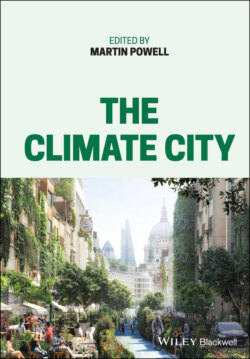Читать книгу The Climate City - Группа авторов - Страница 34
2 The Civilized City – Introduction
ОглавлениеPeter’s conclusion in Chapter 1 was for connected leadership within the modern city. In Chapter 2 I am going to take us into the past to get a stronger sense of why we need to be “systems thinkers” and how we can deliver Peter’s clarity and ambition in today’s city.
Cities themselves are stories. They are not constructed with pen and paper but are built with bricks and mortar. The one thing that remains constant, however, is the human imagination behind them, but just like the way we tell stories changes over time, the way we build and design cities must also change. In Chapter 1, The Ambitious City, Peter discusses how city leadership can aim “beyond” its goals; I too look at some of the ways that cities can move beyond their historical infrastructure to rise up and meet the environmental challenges that face the modern city, and, most importantly, how we can apply those learnings for a better future.
I look at the lessons learnt through the history of cities, from Uruk, the world’s first city (Figure 2.1), to Silicon Valley. I explore what we have learnt to do and not do, along with the history of innovation, problem solving, and governance, and discover qualities that prove to us cities are going to solve the climate crisis, making the case for why local governments are more capable than national governments of addressing this challenge.
Figure 2.1 Uruk. (Source: SAC Andy Holmes / Wikimedia Commons / Public Domain.)
Many cities are increasing in size and power, leading to environmental degradation, social dis-cohesion, and cultural barbarism. This may seem to predict a dire outcome, but we must remember that the city, as a product of human design, attracts innovative people, absorbing them into its bloodstream, who proceed to invent, inspire, and attract other innovators who synthesize art and technology and move society forwards. From the cultural advancements of Athens and Florence, to the cotton mills of Manchester and the Industrial Revolution, and, most recently, the technological innovations of Silicon Valley (Figure 2.2), human invention has made all the difference in urban development.
Figure 2.2 The “Spaceship” Campus, called the ring in Cupertino, California. (Source: Dronandy/Getty Images)
The question is which story do we tell next, and, more importantly, how? As the great American writer Mark Twain said, “there is no such thing as a new idea”, just as there is no reason as to why modern cities shouldn’t benefit from lessons learnt in the past to find new ways of operating together in solutions that help clean up their delicate but improving urban ecosystems. Innovation relies upon the building blocks of the past as much as it does on imagination.
